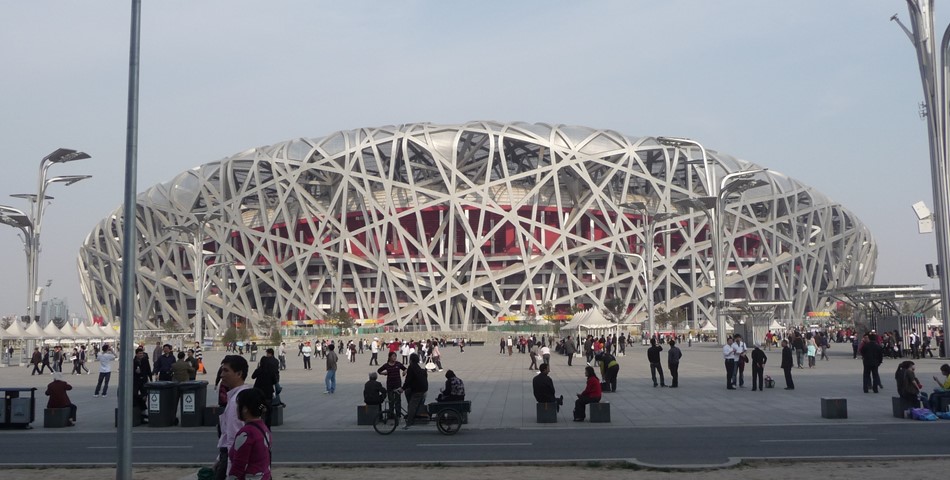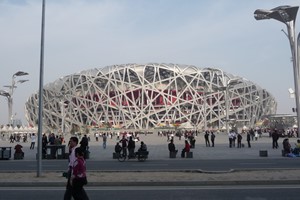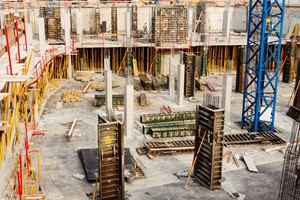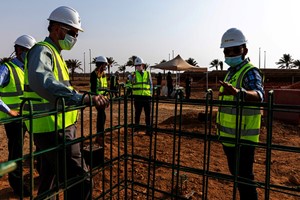Recently, price growth slowed as the result of new government credit measures. Infrastructure remains a buoyant market. Daxing International, a new USD12bn airport south west of Beijing, is the biggest construction project in China. A new subway (one of two under construction in the city) will provide a high-speed connection to the capital. China Zun, at 108 floors, is the tallest building under construction in Beijing. Future outlook China has much at stake following the US elections, including the prospect of increased protectionism from the Trump administration, and a deterioration of Chinese-US political relations. There is also a risk of a credit squeeze should the volume of non-performing loans keep growing. Infrastructure spending has been strong, and the Hong Kong Macao Bridge is set to open in 2017, exposing the Western Pearl Delta to trade of goods and services. The Hong Kong section of the express rail link to Guangzhou is also underway. Construction expenditures in China are expected to grow 7.8 percent per annum in real terms through 2019, according to a recent report by Freedonia. Gains will be driven by ongoing industrialization, an increasing urban population, expanding foreign investment funding, rising personal income levels, and further population and household growth in China. In addition, the government's effort to sustain growth in the manufacturing sector, improve the country's infrastructure, expand municipal utilities, and balance regional economic disparity will help growth in construction spending. However, further growth will be restricted by a slowdown in the Chinese economy, especially in fixed asset investment. China consists of several regional markets characterized by different climates, populations, and levels of economic development. The Central-East accounted for 43 percent of construction spending in China in 2014, higher than its share of population or economic output. However, the region will see slower growth through 2019 than the other five regions of China 7.2 percent yearly, mainly due to the large size of its existing stock. Construction expenditures in the Northwest are forecast to rise 9.0 percent yearly in real terms through 2019, outpacing all other regions. China's "Great Western Development" strategy will result in sizable gains in spending on infrastructure and manufacturing applications in this region. Residential building construction, which accounted for 31 percent of construction spending in China in 2014, will advance at a 7.5 percent annual pace in real terms through 2019. Rising personal income levels, population and household growth, and population migration from rural to urban areas will drive advances. Government efforts to improve living conditions for low income earners (such as construction of affordable and low rent houses in urban areas and subsidies for alterations of dilapidated farmhouses in rural areas) will also further gains in this segment. Nonresidential buildings represented the largest segment of the construction market in China in 2014, accounting for 40 percent of construction spending. Non-residential construction spending is fore-cast to grow 8.1 percent annually in real terms through 2019. Robust growth in consumer spending for manufactured goods and services, accommodative government policies, and foreign direct investment, as well as government efforts to improve standards of living in China, will all help to spur gains in non-residential infrastructure.


Country Reports - China
Industrialization Fuels the Construction Expenditures in China
December 2017

China has massive construction plans underway, including making provision for the movement of 250 million people to its megacities in the next ten years, despite efforts to rebalance its economy to a more service-oriented base. Domestic consumer spending is growing, shifting dependence away from the export sector, according to a report by Turner and Townsend. The yuan fell 6 percent against the US dollar, helping to make exports cheaper and helping Beijing to meet its goal of slowing down the outflow of capital by making overseas purchases more expensive. Construction market and trends Residential construction played a large part in the country meeting its GDP targets in 2016, and price growth of close to 25 percent in Shanghai, Beijing and Shenzhen since 2015 attracted high levels of investment.












